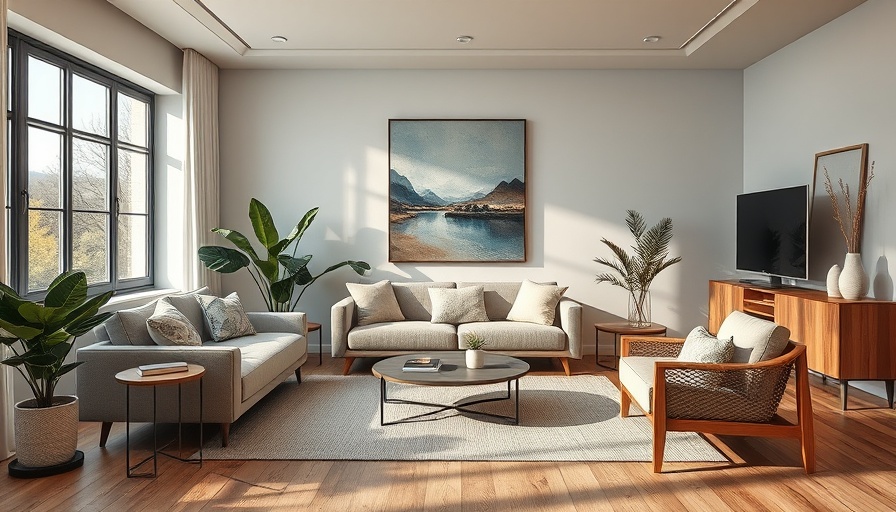
Debunking Home Design Myths: A Fresh Perspective
When it comes to home decorating, countless myths pervade the discourse, often limiting creativity and stifling personal expression. People often cling to these so-called 'rules'—from maintaining a strict focal point to assuming dark colors make a room feel smaller—without questioning their validity. Today, we challenge these common beliefs and explore how embracing a more carefree approach can help you create spaces that truly resonate with your lifestyle.
Why Every Room Doesn’t Need a Focal Point
A prevalent myth in interior design is that each room requires a central focal point to guide the eye. While a singular statement piece can elevate a space, prioritizing a focal point can sometimes lead to an unbalanced design. Instead, consider a layout where attention is distributed throughout the room. Integrating diverse textures, colors, and layers can produce an inviting atmosphere that feels cohesive without the need for a standout centerpiece.
The Truth About Dark Walls in Design
Contrary to common belief, dark walls do not constrict a room's appearance. Instead, deep shades like charcoal or navy can create an impression of depth and sophistication, promoting a cozy ambiance. To counteract potential darkness, strategic lighting and reflective materials like mirrors can maintain an airy feel. Thus, if you're torn between light and dark, remember that darker tones can indeed foster an inviting space.
Small Rooms and Furniture Scale: Rethinking Proportions
Another misunderstanding is that small rooms can only accommodate small furniture. However, incorporating larger items can provide a sense of intention and make the area feel grounded. It’s crucial to focus on the overall balance and layout rather than merely the size of individual pieces. As discussed in recent insights from decor influencers, a single well-placed larger item might serve better than an assortment of smaller ones.
The Evolving Perception of Wallpaper
Wallpaper is often dismissed as high maintenance and outmoded. Fortunately, peel-and-stick varieties have revolutionized this medium, making it accessible and adjustable for renters and homeowners alike. Modern designs should inspire creativity rather than a sense of obligation to conform to outdated standards. If a pattern speaks to you, don’t shy away based on false preconceived notions.
Matching Furniture vs. Personal Style
The idea that matching furniture creates a more harmonious space is increasingly regarded as a limiting belief. A cohesive design can be achieved through the eclectic mixing of styles, colors, and patterns that reflect personality and character. - Recent trends underscore the joy found in diversity; combining textures and tones fosters warmth and individuality. Rather than feeling confined to one aesthetic, allow your living space to tell a story through your unique selections.
Tips for Navigating Decor Myths
With the deluge of design tips available, homeowners can sometimes feel overwhelmed. Here are a few actionable insights to ease the exploration of home decor:
- Prioritize Personal Comfort: Choose colors and furnishings that resonate with you emotionally, creating a space that feels genuinely enjoyable.
- Explore Beyond Traditional Norms: Don’t hesitate to experiment with non-matching pairs, odd-scale furnishings, or unexpected textures.
- Balance is Key: Focus on how different pieces interact within the space, maintaining balance through arrangement rather than conforming strictly to traditional setups.
Ultimately, the process of decorating should be a joyful expression of self. By debunking these pervasive design myths, you'll gain the freedom to mold your environment in ways that feel right to you, fostering a space that is not only beautiful but true to your personal aesthetic. Embrace the unexpected, and your home will resonate with warmth and authenticity.
 Add Row
Add Row  Add
Add 


Write A Comment